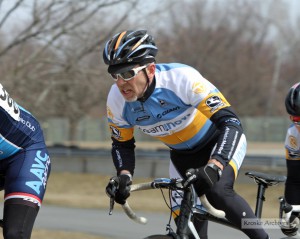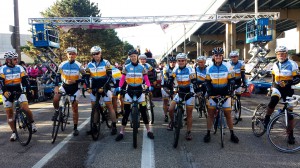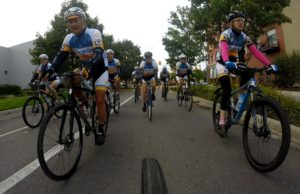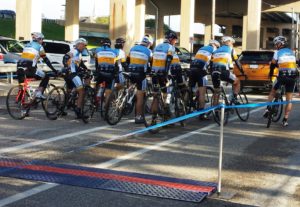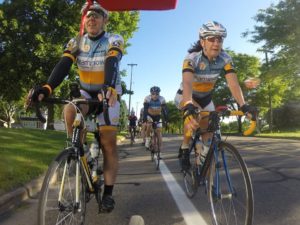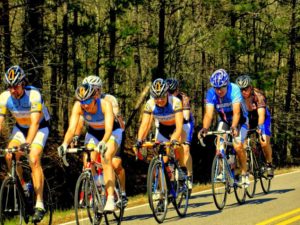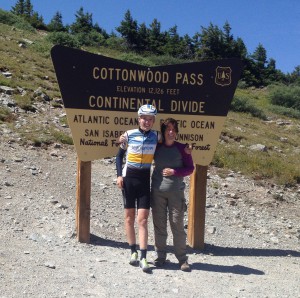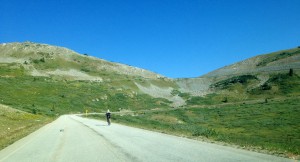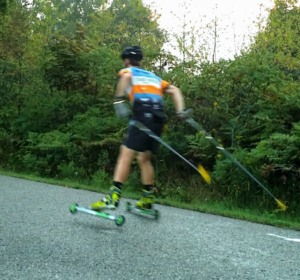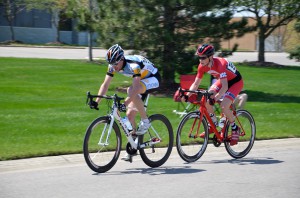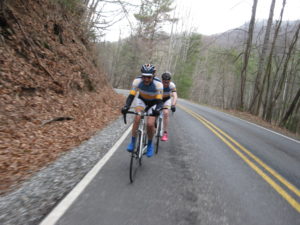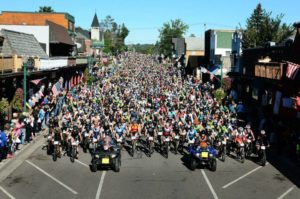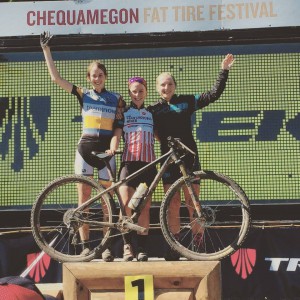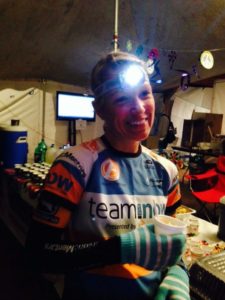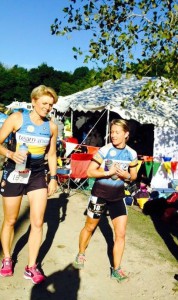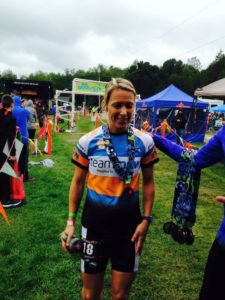By Brian Reynolds, Team OAM Now Multi-sport Athlete
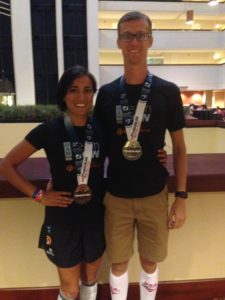 Now that fall is upon us in Michigan, the triathlon season is officially over. So, let me update you on my 2015 race season since the Grand Rapids Half Ironman-distance which was the last time I posted.
Now that fall is upon us in Michigan, the triathlon season is officially over. So, let me update you on my 2015 race season since the Grand Rapids Half Ironman-distance which was the last time I posted.
Decatur Triathlon, Decatur, Ill., July 12th – This was my first warm and humid triathlon of the season. In addition, it was first time I started in a elite wave which was humbling. The race distance was in-between a sprint and olympic. The one lesson I took away from this experience was swim in a group and not by yourself! The bike was hard after a tough solo swim and the hills at the beginning of the bike did not help. The run was miserable due to the heat and being fatigued from the bike. I finished 5th overall in the elite wave and had the fastest run split by a few seconds.
Ready or Not 5k, Otsego, MI, August 1st – I’ve been doing this race since my freshman year in High School. The race is put on by the Otsego Running Club. This race was one of the highlights of the year for me because I finally won it. In years past, I’ve always finished 2nd or 3d to collegiate runners and finally there were no collegiate runners this year 🙂
USAT Age-Group Olympic National Championships, Milwaukee, Wi, August 8th – This has been a staple race for me every year. I’ve been doing this race since 2013 and it’s always been at the same venue so I can compare my results to other years to measure my progress. I traveled to Milwaukee with my Athletic Mentor teammate Elaine Sheikh who had a great race weekend by finishing in her age group 4th in the olympic and sprint distances. Congrats Elaine! This year I set a course PR with a 1:57:02. I was happy with the swim since I was not swimming with a crowd like last year. My swim time this year was a PR. The bike section, however, did not go as well. My time was slower than previous years, but I was happy to not get a drafting penalty like I did last year. The run section went great. I was only a 2 seconds off per mile than last year when I was in really good run form. Overall, I was happy with my finish which was 9th in my age group and was on the medal podium.
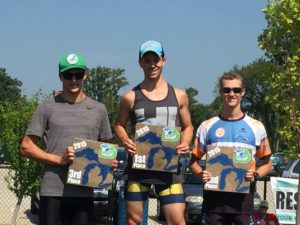 Michigan Titanium Half Ironman Relay, Grand Rapids, Mi, August 23rd – This was the first triathlon relay team I’ve participated in and it was a lot of fun. My relay team was Athletic Mentors which included Paul Raynes (bike) and Erin Young (run). I did the 1.2 mile swim so it was a good opportunity to see how fast I could go without having to bike and run afterwards (even though I still did to get a workout in. I started with the female participants in the half-ironman race. I ended up finishing 3rd overall in the swim section. I was just 9 seconds behind the leader. I felt strong in the water and had an opportunity to practice drafting behind faster swimmers that I would not normally swim with. It was unfortunate that they had to cancel the event due to lighting, but our team was on pace to finish at least 2nd overall.
Michigan Titanium Half Ironman Relay, Grand Rapids, Mi, August 23rd – This was the first triathlon relay team I’ve participated in and it was a lot of fun. My relay team was Athletic Mentors which included Paul Raynes (bike) and Erin Young (run). I did the 1.2 mile swim so it was a good opportunity to see how fast I could go without having to bike and run afterwards (even though I still did to get a workout in. I started with the female participants in the half-ironman race. I ended up finishing 3rd overall in the swim section. I was just 9 seconds behind the leader. I felt strong in the water and had an opportunity to practice drafting behind faster swimmers that I would not normally swim with. It was unfortunate that they had to cancel the event due to lighting, but our team was on pace to finish at least 2nd overall.
3 Discipline’s Michigan Championships, Detroit, Mi, September 6th – I did not plan on doing this race at the beginning of the year, but thought I had to squeeze in one more race before my “A” race at ITU Worlds in Chicago. The course was very flat for the bike and run which would be very similar to the conditions at Chicago thus it would be a good prep race. My goal was to push the swim and bike and tempo the run. The competition in the swim section was a lot more competitive than I anticipated. In the first 5 minutes of the swim, the lead pack was nowhere to be seen. I had a good transition into the bike, but halfway through I began to fall off pace. At the end of the bike, I had no idea what place I was in due to the sprint and duathlon events going on at the same time. When I got to the run section, the temperatures were approaching the low 80’s thus my tempo pace was challenging to maintain. On the bright side, I finished 2nd overall. I knew going into this race that I would not be at my peak, but my confidence was tested going into ITU Worlds at Chicago.
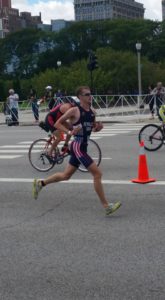 ITU Age-Group World Championships, Chicago, Ill., September 19th – I qualified for this event last year at USAT Nationals in Milwaukee. This was my 2nd time participating in this event. This was a worldwide event which meant that it would be a very competitive since I’ll be racing against the top athletes from several different countries. Going into this race, I did not have a lot of confidence since I haven’t had a really strong race performance since Grand Rapids Triathlon. However, learning from last year, my coach Mark Olson had laid out a good taper plan. Leading up to this event, my runs had gone great, but I felt that my bike performance was lacking.
ITU Age-Group World Championships, Chicago, Ill., September 19th – I qualified for this event last year at USAT Nationals in Milwaukee. This was my 2nd time participating in this event. This was a worldwide event which meant that it would be a very competitive since I’ll be racing against the top athletes from several different countries. Going into this race, I did not have a lot of confidence since I haven’t had a really strong race performance since Grand Rapids Triathlon. However, learning from last year, my coach Mark Olson had laid out a good taper plan. Leading up to this event, my runs had gone great, but I felt that my bike performance was lacking.
Our wave started at 10:30am. The starter let us into the water (Lake Michigan) 1 minute before the start. When I jumped in the water, I immediately lost my breath due to the cold. I did deep breathing exercises to get my breath under control and slowly submerged my face in the water to let my body calibrate to the water’s temperature. Luckily, I got my breathing under control 5 seconds before the gun went off. The first 200 yards were very clustered and rough. I got hit in the mouth which cut and bruised my lip. Despite the clustered swim, I stayed calm and kept my stroke long and smooth to conserve energy. After 200 yards, I was passing several swimmers because they over fatigued themselves at the start. I gradually moved up and got behind the lead swimmer in our group where I held my position the last 1000m. I felt great during the entire swim.
The bike pacing was erratic due to the fast, slow, moderate paces from navigating around riders and turns. The bike course was a 2 loops. The 2nd loop was very crowded due to more athletes from the other start waves now racing. There were a few points where I had to put in hard efforts to move up a few places to stay close for my age group competitors. If I was able to hold a steady effort this would have been my best bike split ever. Overall, I felt strong and under control the entire ride.
I had a very good run and once again it was my strongest section of the triathlon. I had the fastest run split for my age group and the 2nd fastest run split overall. I was running a 5:24-5:28 pace the first 4 miles. I started to fatigue after 4 miles, but still held on strong. The run course measured long at 6.6 miles instead of 6.2 miles which I did not complain since it gave me an advantage.
My overall time for the event was 1:58:41 which placed me 8th overall in my age group; I was super happy about that. I was surprised by this good performance which goes to show that you can still surprise yourself even after 14 years of competing.
This race punctuated my season with an exclamation mark. I ended feeling really good about my work, my achievements, and of course, training for next season.
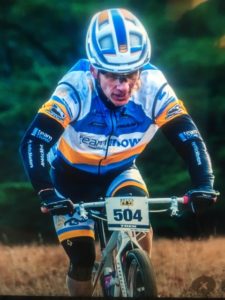 ICEMAN!! Why is this race one of the best races of the year? What is the allure of this famous race? It’s a race with so much history and is recognized not only nationally, but also worldwide. This was the 26th year of this race that is deemed the largest point-to-point MTB race in the country. It started in 1990 by a few guys who wanted to see if a mountain bike could make the trip from Kalkaska to Traverse City. 35 eager participants made the trek. Now, this year over 5,000 participants took on the challenge to conquer the historic event.
ICEMAN!! Why is this race one of the best races of the year? What is the allure of this famous race? It’s a race with so much history and is recognized not only nationally, but also worldwide. This was the 26th year of this race that is deemed the largest point-to-point MTB race in the country. It started in 1990 by a few guys who wanted to see if a mountain bike could make the trip from Kalkaska to Traverse City. 35 eager participants made the trek. Now, this year over 5,000 participants took on the challenge to conquer the historic event.








